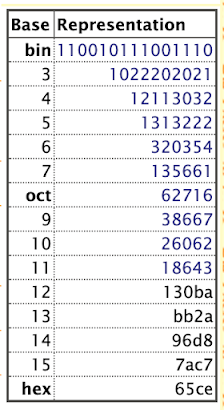Today I turned 26066 days old and the OEIS had little of interest to say about the properties of this number. It was the same with Numbers Aplenty, my other source of information about number properties. The latter site did remind me that the number could be expressed as a sum of two squares, \(71^2+145^2 \), with my age in years (71) appearing coincidentally. I searched for some time on other sites to find something else of interest but could find nothing.
Finally, I thought about the sexagesimal or base 60 number system. What if I interpreted 26066 as a time in seconds and converted it to its equivalent in hours, minutes and seconds? Doing this, the result is 7:14:26. As I wrote in the graphic (Figure 1) and which I'll reproduce here in case of difficulty in reading it:
Using 1 second equals 1 day, it takes about two months for the minute hand to progress one tick and 120 months or about 10 years for the hour hand to progress five ticks and mark out the passage of an hour. The hours thus mark out the decades and the minutes mark the passage through the months and years of that decade. It’s an interesting way of viewing the passing of time. Very few people will make it to 10 o’clock by this reckoning. An interesting approach might be to look at when sunrise occurred on the day you were born and add the elapsed time to that. For example, the Sun rose at 5:58 on the day I was born and so it’s now about 1:12pm. The Sun set at 5:44pm so I’m not going to make it to sunset.
Using a site like timeanddate.com, it's easy to find when the Sun rose on the day you were born. See Figure 2 using my own birth as an example:
Note that each time they meet, the number of minutes past the hour keeps increasing, so the hour hand would have moved closer to the next number. After 11 o'clock, the minute hand has to travel all the way and by the time they meet it is has to be 12 o'clock again, since we know what the clock looks like at that time. So the two hands overlap 11 times in a 12 hour period. So, in a 24 hour period, they would overlap 22 times.
To answer the second part of the question, let's try to figure out the little bit of extra time the minute hand needs to catch up to the hour hand after every 1:05 hours. Well, after 12 o'clock there are eleven occasions when the two hands match up, and since the clock hands move at constant speeds, those 11 events are spread equally apart around the clock face, so they are 1/11th of an hour apart. That's 5.454545 minutes apart. In other words they meet after every 1 hour and 5.454545 minutes.
The precise times they overlap (in hours) would be 1 + 1/11, 2 + 2/11, 3+ 3/11, all the way up to 11 + 11/11, which is 12 o'clock again.
Converting these clock times back to seconds again gives the following sequence:
3927, 7855, 11782, 15709, 19636, 23564, 27491, 31418, 35345, 39273, 43200
I've submitted this sequence for inclusion in the OEIS as doesn't appear there and I think it's an interesting one. Let's see if it gets approved.
UPDATE on August 19th 2020
Today my sequence was approved and with the legendary Neal Sloane giving it the final stamp of approval. It is OEIS A335789. The sequence is a good example of how playing around with different ways of interpreting a number can lead to interesting results. In this case, my viewing the number as representing seconds after 12:00 on a clock face was the crucial step that led me to the devising of the sequence.
A335789 | a(n) = time to the nearest second at the n-th instant (n>=0) when the hour and minute hands on a clock face coincide, starting at time 0:00. |
Below is a snapshot of the sequence as it appears in the OEIS:
A120500 | Times in hours, minutes and seconds (to the nearest second) at which the smoothly crossing minute and hour hands of an analog clock coincide, over a period of one complete 12-hour sweep of the hour hand. |












